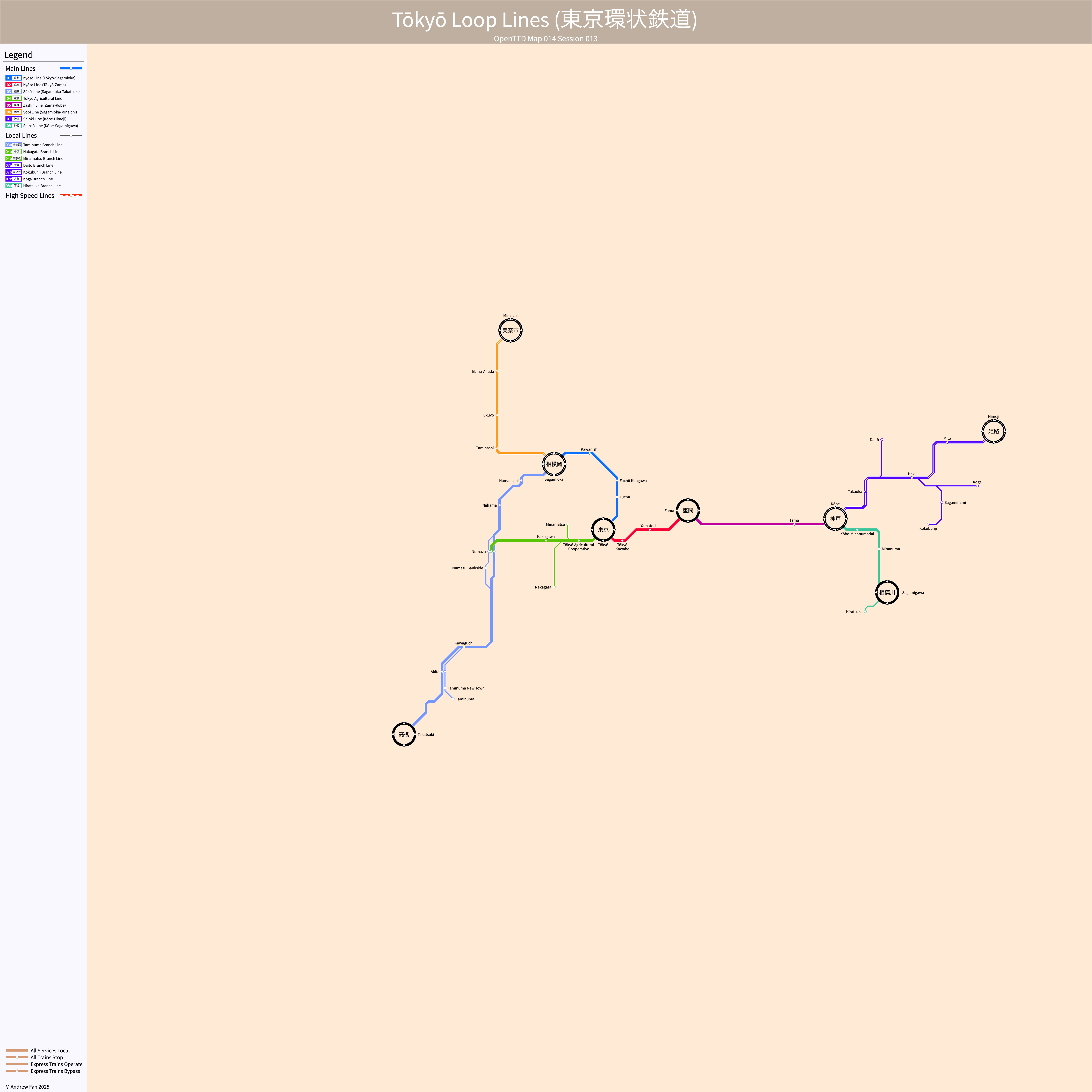014 Tōkyō Loop Lines, OpenTTD
Table of Contents
Overview - 014 Tōkyō Loop Lines
Every city deserves its own loop line, and at Tōkyō Loop Lines, we make that a reality. Enjoy direct trips into city loops, with seamless transfers to all of our destinations and shuttle buses connecting all stations to town and city centers.
Shareholder notice: We are aware that on some routes the trains spend more time circling mostly empty around the loops than actually traveling between cities, and that this is causing an operational deficit.
Design Methodology
Wouldn't it be nice if every city had a single directional loop around it that resulted in superior high-throughput train flow around them, with easy access and excellent transfers?
Well, yeah. Except that OpenTTD's limitation of no stations on diagonals means all junctions had to be at the corners, completely destroying the 'easier junctions by using single directional loops bit'. Also, trains were entering loops, dumping their passengers at the first stop, cycling around to the other side completely empty, and then running completely packed, with outer cities having horrid load distribution between the stations. OpenTTD's profit setup made this setup even worse, with 02 Tokyo-Zama spending roughly 2/3 of its runtime IN THE LOOPS running empty, and therefore losing such vast amounts of money despite being over capacity that it was hard to justify what was going on.

Tokyo. Yes, the map generation managed to put a city called Tokyo in the middle of the map. Yes, each junction was built by hand. Yes, it's busy. Yes, it's chaos. Yes, I never had anywhere remotely close to the amount of money to build the high speed rail station.
In short, the structure of the network was so inefficient for actually getting passengers where they needed quickly and directly (and with what effectively constituted excessive deadheading for most lines) that the company managed to dip into the red multiple times over, and the map was abandoned when it became clear that the loop system itself was the problem. Still, a worthwhile experiment.
Aside: Each city with a loop had an east-west and north-south bus, connecting the equivalent loop stations to the city center, and each other town/city had one bus directly connecting the city center to the station. Passenger numbers were not the issue on this map - it was very much a fundamental design issue with indirect routing that was its downfall.
